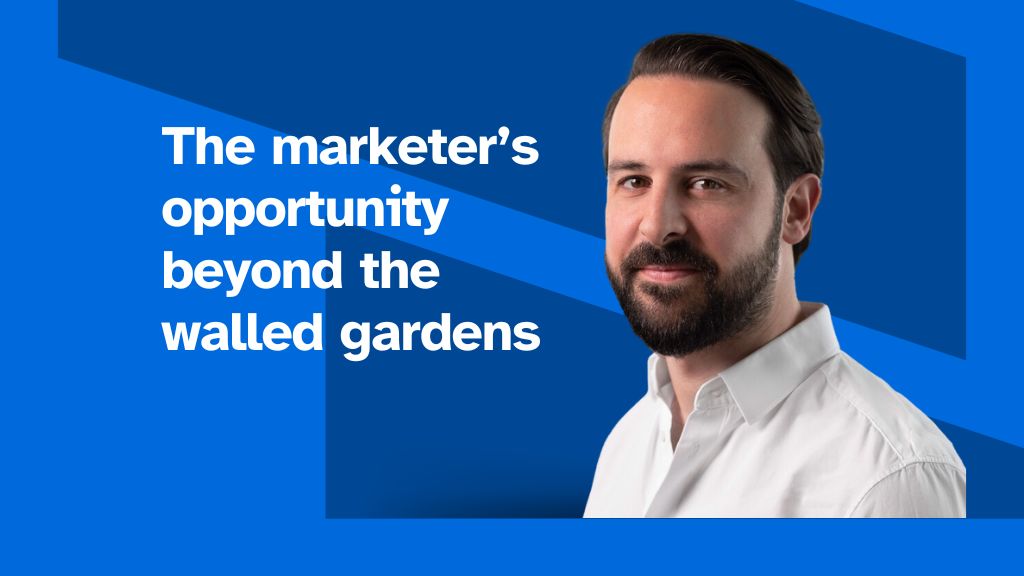By Ben Jeger, EMEA VP at Moloco
For marketers, the confined ecosystems of walled gardens such as those provided by Apple, Meta and Google have been seen as a safe place to focus their digital marketing strategies and efforts to reach buyers or drive installs. Marketers know that the walled gardens are far from perfect: there is a limit on the eyeballs that can be reached and this restricted inventory increases the need to derive value from campaigns. Now marketers are on the look elsewhere and thinking more creatively: Increasingly they are looking beyond the wall to the open internet.
However, with great opportunity there will always be great challenges: It’s a fact that the open internet offers expansive reach with access to millions of independent apps. To put this in some context, our own Moloco Ads platform connects to over 40 ad exchanges, reaching over 6.7 billion devices and over 3 million apps. That means that the opportunity essentially exists within a vast web of constantly changing data, with a multitude of variables, which brings a complexity that can descend into chaos.
Taming the open internet
The challenge facing marketers is how they tame the open internet. Some have tried to achieve this by partnering with a limited number of ad exchanges that they believe best address their audience needs. However, this just puts them into other walled gardens: An ad exchange only has access to the inventory for the publishers it has integrated with, whereas the open internet is a dynamic environment with a constantly growing, evolving inventory.
It is also a myth that exchanges have a unique inventory over competitors, with our own analysis showing that across the top six exchanges only 1% of their inventory is unique to them.
Working with multiple ad exchanges also creates a bidding problem. Each is operating in isolation on campaign bids, and because so little of the inventory is unique, it is common to bid against the same impression through different exchanges. It may help you secure the impression, but did you really win, if you paid more than you needed to?
Choice can also be complex. On the open internet, the strategy is not just to target premium impressions from a known inventory. The goal is to identify the right impression from a constantly growing supply – the premium impression for your needs – and secure it. Navigating the best supply path in an open environment is complex too. On Moloco Ads, just one impression traveling through three ad exchanges, can see anywhere between 12 and 40 bid requests!
Optimizing through Machine Learning
Now, with machine learning, marketers can address these challenges with an approach that allows them to focus on their goals, rather than experiencing option paralysis, or being forced to compromise their reach and success.
The technology is now advanced enough to unlock the true potential of supply path optimization to ensure the best price and creative for an impactful impression: It can process vast amounts of data, make predictions in milliseconds, and continuously learn and improve over time. At Moloco, our platform analyzes an ad opportunity, the creative and the inventory, making predictions in under 12 milliseconds – that is about 20 predictions in the time it takes to blink. The ability to assess huge volumes of data and make accurate predictions at speed is critical to success on the open internet. There are three key areas where only machine learning has been able to bring order to the chaos and make the open internet truly accessible to all:
● Supply path: As mentioned there are duplicate bid requests sent per impression and figuring out which one to respond to isn’t trivial. Machine learning determines which path is the most likely to drive the desired outcome at the lowest price, factoring in the differences in ad rendering capabilities and cost associated with the ad exchanges, who are sending the bid requests.
● Pricing: Given pricing on the open internet is largely based on 1P auctions. Machine learning utilizes predictive algorithms to analyze first-party, contextual, and campaign data, enabling it to estimate the value of the user that’s behind the impression as well as what other auction participants are likely to bid. This helps prevent overbidding and ensures ads are delivered efficiently and cost-effectively.
● Creatives: Machine learning also predicts the effectiveness of different creatives by analyzing real-time and historical data. It identifies which creative is likely to maximize user engagement and ensures a creative is matched with the creative rendering capabilities of the chosen path.
Today’s marketers are constantly hit with new obstacles and complex challenges: a huge amount of recent focus has been on regulatory and platform changes, such as ATT and cookie deprecation, that make it harder to target audiences. But there are more options available to marketers in this privacy-first world and they exist beyond the walled gardens that are overly exploited hunting grounds. Technology such as advanced machine learning is now signposting exciting pockets of value: new under-exploited users in the open internet’s constantly growing inventory.
This technology to tame the open internet exists right now and is soon to become even more accessible with Moloco’s long awaited SDK which will soon be out on general release enabling more marketers to break out of the overfished waters and find new highly relevant users beyond the wall.












